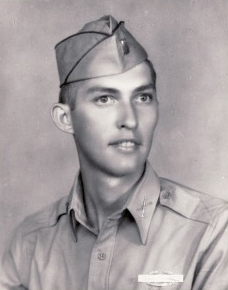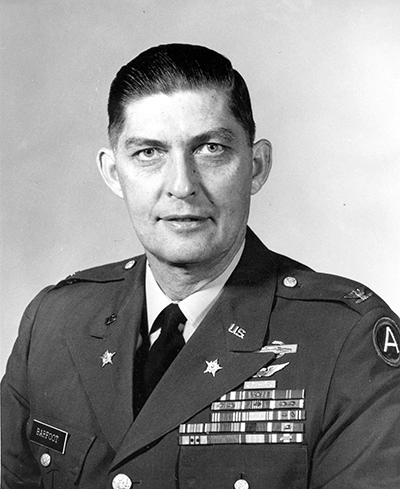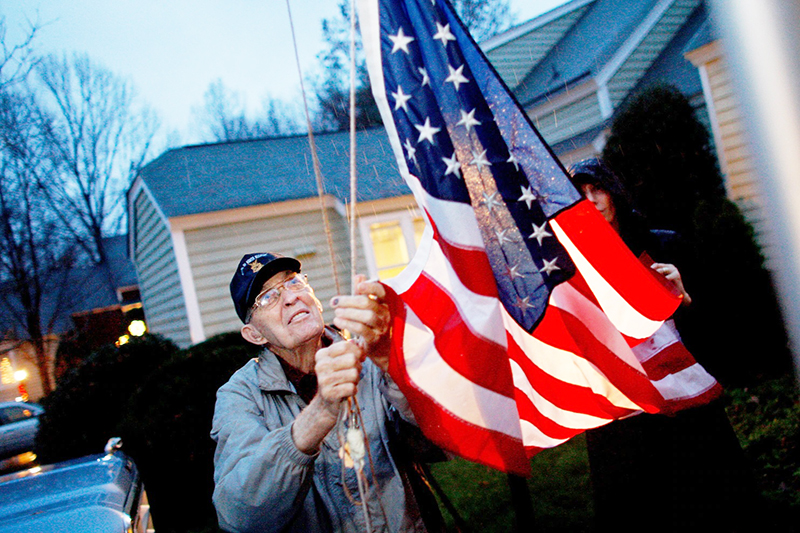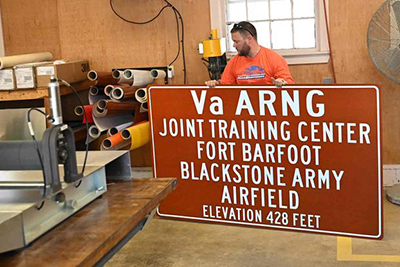
Barfoot was born in Edinburg, Mississippi. His grandmother was Choctaw Native American, but Barfoot himself was not an official member of the Choctaw Nation; although he was eligible, his parents never enrolled him. Unlike Senator Elizabeth “high cheek bones fraud” Warren, Van Barfoot actually was of Native American ancestry.
There is the possibility that Barfoot’s ancestors were subjugated and participated in that horrible event known as the Trail of Tears. The Trail of Tears was the forced displacement of approximately 60,000 people of five Native American Tribes between 1830 and 1850 by the United States government.
As part of the government’s Indian removal policy, members of the Cherokee, Muscogee (Creek), Seminole, Chickasaw, and Choctaw nations were forcibly removed from their ancestral homelands in the Southeastern United States to newly designated Indian Territory west of the Mississippi River after the passage of the Indian Removal Act in 1830.
We were unsuccessful in our efforts to find out definitively if Barfoot’s ancestry were made unwilling participants in the Trail of Tears, but there is a high probability some may have very well been part of that tragic event.
BARFOOT’S CONTRIBUTION DURING WWII
During the Italian Campaign Barfoot participated in a series of amphibious landings: the Allied invasion of Sicily in July 1943, the invasion of mainland Italy at Salerno in September 1943, and finally the landings at Anzio in late January 1944.

His unit pushed inland from Anzio, and by May 1944 had reached the small town of Carano in southern Italy, in the province of Latina. They set up defensive positions and Barfoot conducted patrols to scout the German lines.
This was when his upbringing and probably his Native American heritage came in to play, as he was known to literally walk silently. He could sneak up on virtually anyone, and he caught many Germans by surprise when he did.
When his company was ordered to attack on the morning of 23 May 1944, Barfoot, now a technical sergeant, asked for permission to lead a squad. Because of the patrols he had made, he knew the terrain and the minefield which lay in front of the German position.
He advanced alone through the minefield, following ditches and depressions, until he came within a few yards of a machine gun nest on the German flank. After taking out the gun and its crew with a hand grenade, he entered the German trench and advanced on a second machine gun, killing two soldiers and capturing three others.
When he reached a third machine gun, the entire crew surrendered to him. Others also surrendered, and Barfoot captured a total of seventeen German soldiers and killed eight.
When the Germans launched an armored counterattack with three Tiger tanks directly against his positions later that day, Barfoot disabled the lead tank with a bazooka, killed part of its crew with his Thompson submachine gun, (AKA: tommy gun, or Chicago typewriter), and turned back the German attack.
Van Barfoot then advanced into enemy-held territory and destroyed an abandoned German artillery piece. He returned to his own lines and helped two wounded soldiers from his squad to the rear. His gallantry was so impressive, his officers submitted his name for consideration to receive his nation’s highest medal…
CITATION
For conspicuous gallantry and intrepidity at the risk of life above and beyond the call of duty on 23 May 1944, near Carano, Italy.
With his platoon heavily engaged during an assault against forces well entrenched on commanding ground, 2d Lt. Barfoot (then Tech. Sgt.) moved off alone upon the enemy left flank.
He crawled to the proximity of 1 machine-gun nest and made a direct hit on it with a hand grenade, killing 2 and wounding 3 Germans.
He continued along the German defense line to another machinegun emplacement, and with his tommy-gun killed 2 and captured 3 soldiers.
Members of another enemy machinegun crew then abandoned their position and gave themselves up to Sgt. Barfoot.
Leaving the prisoners for his support squad to pick up, he proceeded to mop up positions in the immediate area, capturing more prisoners and bringing his total count to 17.
Later that day, after he had reorganized his men and consolidated the newly captured ground, the enemy launched a fierce armored counterattack directly at his platoon positions.
Securing a bazooka, Sgt. Barfoot took up an exposed position directly in front of 3 advancing Mark VI tanks. From a distance of 75 yards his first shot destroyed the track of the leading tank, effectively disabling it, while the other 2 changed direction toward the flank.
As the crew of the disabled tank dismounted, Sgt. Barfoot killed 3 of them with his tommy-gun. He continued onward into enemy terrain and destroyed a recently abandoned German fieldpiece with a demolition charge placed in the breech.
While returning to his platoon position, Sgt. Barfoot, though greatly fatigued by his Herculean efforts, assisted 2 of his seriously wounded men 1,700 yards to a position of safety. Sgt. Barfoot’s extraordinary heroism, demonstration of magnificent valor, and aggressive determination in the face of pointblank fire are a perpetual inspiration to his fellow soldiers.

RECOGNIZED FOR HIS BRAVERY
Given the fact that Van Barfoot was a natural born leader, he was subsequently commissioned as a second lieutenant in the United States Army. His division moved into France, and by September 1944 was serving in the Rhone Valley.
When Lt. Barfoot learned he would be awarded the Medal of Honor, he requested to have his presentation ceremony in the field, so his soldiers could all could attend. He was formally presented with the MOH on September 28, 1944, in Épinal, France, by Lieutenant General Alexander Patch.
Barfoot later served in the Korean War and the Vietnam War, and was awarded a Purple Heart. He reached the rank of full bird colonel before retiring from the Army. In retirement, he lived on a farm in Amelia County, Virginia, and later moved to Henrico County, Virginia, to be near his daughter.
NEIGHBORS THREATEN BARFOOT
In December 2009, the homeowners’ association (HOA) of the Sussex Square, where Barfoot lived in Henrico County, Virginia, ordered him to remove the 21-foot flagpole he had erected without their approval and from which he began flying the US flag regularly, but especially on Veterans Day.
The HOA instructed their law firm to, if necessary, sue Colonel Barfoot for proudly flying his American Flag from his “unauthorized” flagpole. The story first became public when Barfoot’s son-in-law reported the story on local talk radio show Elliot in the Morning.
Now you can imagine what was going through Barfoot’s mind. He surely remembered his buddies in the Army fighting and dying for that same American Flag that he wanted to raise in front of his home. It probably brought back vivid memories from his past.
If Barfoot took on three Tiger tanks, he wasn’t even slightly intimidated by the “regulators” of a homeowner’s association or their nasty attorneys. No one was going to stop this 90-year-old man from flying the Flag he fought for in several wars and “police actions.”

Fox News and several other news networks picked up the story nationally. The association’s bylaws do not forbid flagpoles, but the HOA ruled Barfoot, then aged 90, would not be allowed to use it “for aesthetic reasons.” Again, it was just too tall, and dare we say it, too proud.
Barfoot resented and contested what he felt was an order they could not give him. Barfoot received support from the public (48,000 people on a Facebook page alone), from the American Legion, from numerous military groups, and from scumbag politicians, and White House Press Secretary Robert Gibbs.
Well you can imagine how the HOA suddenly became weak in the knees and quickly dropped their demands against Barfoot on December 8, 2009, ending the controversy within one week of the story breaking on national news.
This reminds us of another case where a Navy man (David Mackie) went to raise an American flag in front of his residence in San Diego. The flag he put up was one of the original “American” flags used during the Revolutionary War.
He told his HOA their bylaws stated that only an American flag could be flown but did not specifically designate the Stars and Stripes we fly today as the only acceptable American Flag. Long story short, Mr. Mackie didn’t have a Medal of Honor and did not make national news. He was forced to remove his classic and original “American Flag.”
HIS DEATH AND HONORS
Barfoot suffered a skull fracture and bleeding in the brain from a fall in front of his home, and died two days later on March 2, 2012, at the age of 92.
On October 9, 2009, the portion of Mississippi Highway 16 which runs from Carthage through his hometown of Edinburg to the border between Leake and Neshoba counties was named the Van T. Barfoot Medal of Honor Highway.
A building at Richmond Veterans Administration Medical Center in Richmond, Virginia, also carries his name.
FORT PICKETT TO FORT BARFOOT
In May 2022, The Naming Commission recommended that Fort Pickett in Blackstone, Virginia be renamed Fort Barfoot, as part of a larger program of renaming installations named for Confederate Army leaders like Brigadier General George E. Pickett who led the infamous Pickett’s Charge during the Battle of Gettysburg during the American Civil War.
Pickett’s Charge was a bloodbath. Over 50% of the men sent across the fields were killed or wounded. In Pickett’s division alone, out of about 5,500 men lost, 224 were killed, 1,140 wounded, and 1,499 missing/captured.
Pickett’s three brigade commanders and all thirteen of his regimental commanders were killed in action. George E. Pickett died in Norfolk, Virginia, on July 30, 1875.
The name change from Fort Pickett to Fort Barfoot was recently made official on March 24, 2023.
Politics aside, we feel that Colonel Van T. Barfoot is a man worth remembering.

Note: we obtained information about Colonel Barfoot from various sources, including Wikipedia, Army documents and noted historians. If anyone out there has information they feel should be in this article, send it to us for consideration.



